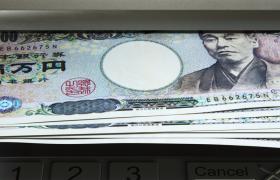Quick Contact

31st May 2019
While the week may have started off with a long weekend in the UK and US and a quiet Monday in Australian data, it is certainly finishing with a flurry. A number of key domestic economic data points came out lower than expected this week, but failed to have the expected negative impact on AUD performance as a result of growing uncertainty of USD and GBP markets. Today, one Australian dollar will buy you:
0.6756 US dollars
73.0458 Japanese yen
0.5998 euros
0.5308 Great British pound
0.8876 Canadian dollars
1.0313 New Zealand dollars
0.8984 Singapore dollars
Looking around for the best currency deals? Don’t forget our Best Price Guarantee – if you find a better price from a domestic competitor we will beat it.
More weak domestic results
The Aussie dollar has really showed off its resilience this week, finishing virtually unchanged in the face of mounting international and domestic pressures. On the domestic front, it looks like every economic indicator is lining up for a rate cut when the RBA meet next Tuesday, with more weak results set to all but force their hand if they haven’t locked a cut in already.
According to data released yesterday by the Australian Bureau of Statistics (ABS), private sector investment has fallen unexpectedly in the first quarter of 2019 by 1.7% to a total of $29.29 billion. Private sector capital expenditure, or (CAPEX) in Economist, is an important measure of business investment in Australia compiled through a random sample of around 8,000 businesses each quarter.
Although the news on March quarter expenditure was disappointing, there was better news when it came to the outlook for intended business investment, rising to $99.1 billion, 7.6% higher than earlier estimates. Intended investment by manufacturers rose by 5.6% on last quarter estimates along with a 7.8% increase in intended investment by service-based businesses. The RBA, in particular, will be pleased with the improved outlook in those sectors given it has signalled a desire to see growth in non-mining investment for smoother economic growth.
Keeping the ABS busy this week, they also released their April data on approvals to build new homes. The figures showed continued decline in the number of approvals, dropping by 4.7% to 14,123. Total number of approvals is now down 24% over the past year and particularly pronounced in the apartment and detached-housing sectors. Last week’s poor construction figures, the decline in new home approvals and lower CAPEX figures does not bode well for a strong first quarter GDP result when it is released next Wednesday.
Despite all this, the Aussie dollar has chugged away around 67 US cents, avoiding the short term volatility the weaker than expected results would usually bring.
Brexit pessimism keeps the pound treading water
An announcement yesterday that UK car production was slashed by nearly half over April appears to have spooked investors off the GBP, causing a slight drop against the AUD compared with earlier this week. Many car factories, including BMW's mini factory, were closed for the month in an effort to cope with the expected disruption caused by a 29th of March Brexit that never eventuated. The spectre of a No-Deal Brexit on October 31st has only increased uncertainty in many UK manufacturing businesses, causing investment to stall and jobs to be lost due to the threat of border delays, production stoppages and additional export/import costs.
The AUD/GBP has also been helped by increasing uncertainty surrounding who will replace Theresa May as leader of the Conservative Party and what their agenda will be. Despite many UK businesses, EU members and economists agreeing that a No-Deal Brexit would likely be economically damaging, several of the eleven candidates for the position, including Boris Johnson, Dominic Raab, Andrea Leadsom, and Esther McVey have stated they would leave the EU without a deal. Yikes.
Whoever takes over as May’s successor will have to commit to leaving the European Union no later than October 31st, seek another extension or put forward a second referendum all while facing intense pressure after the Conservative Party’s terrible result in the European elections.
China accuses USA of economic terrorism
In the latest verbal stoush of the escalating US/China Trade War, the Chinese Ministry of Foreign Affairs has accused the US of “economic terrorism economic hegemonism, and economic unilateralism.” The statement was made alongside equally ominous rhetoric from Chinese state media, which printed an article yesterday with the headline: "Don't say we didn't warn you."
This verbal escalation comes on the back of a US decision made on May 15, to ban major Chinese companies, such as Huawei, from buying tech components like computer chips from US companies including Google. The catch is that many of those computer chips and other strategic technologies are made using rare earth minerals, of which China is the major exporter. You guessed it; China has now threatened to cut supply of these minerals in a seemingly never-ending circle of tit-for-tat manoeuvres.
Chinese buyers have also stopped ordering soybean products from US suppliers, on the back of the US announcing a $16 Billion relief plan for farmers affected by dropping exports to China. US stock markets have been in turmoil due to the intensifying trade tensions and are now on track to post their first negative month of 2019, the S&P 500 alone is down 5.5% in May.
During the last week, the inability of the AUD/USD to slide further despite our own domestic woes may reflect growing expectations that the US Federal Reserve will cut interest rates to combat the effects of the Trade War and stimulate the economy. According to analysts, the market is now pricing an almost 80% chance of a September rate cut, which could help keep the AUD from slipping too far below the lows of this month.
If you are purchasing your currency this week, make sure to add Rate Guard. Add it with a purchase in store, it’s free, and if the rate improves within 14 days we will refund the difference.
This blog is provided for information only and does not take into consideration your objectives, financial situation or needs. You should consider whether the information and suggestions contained in any blog entry are appropriate for you, having regard to your own objectives, financial situation and needs. While we take reasonable care in providing the blog, we give no warranties or representations that it is complete or accurate, or is appropriate for you. We are not liable for any loss caused, whether due to negligence or otherwise, arising from the use of, or reliance on, the information and/or suggestions contained in this blog. All rates are quoted from the Travel Money Oz website and are valid as of 31 May 2019.*Terms and conditions apply to Best Price Guarantee and Rate Guard.











